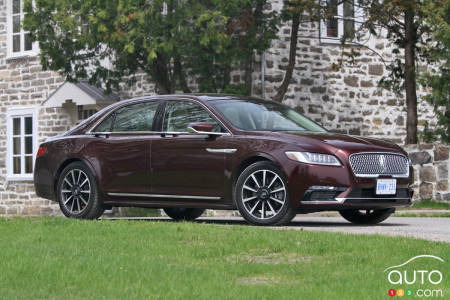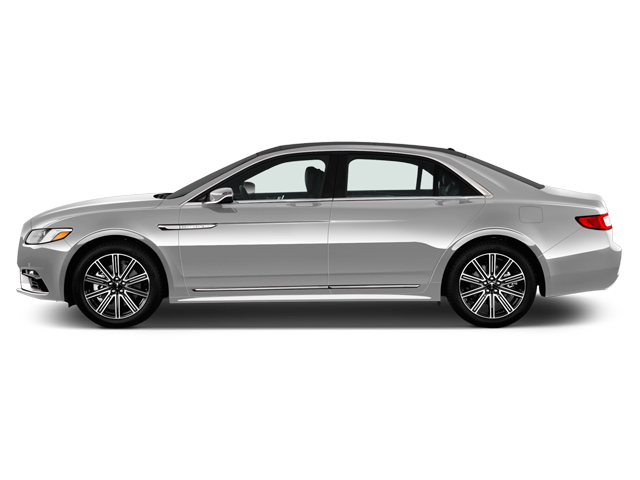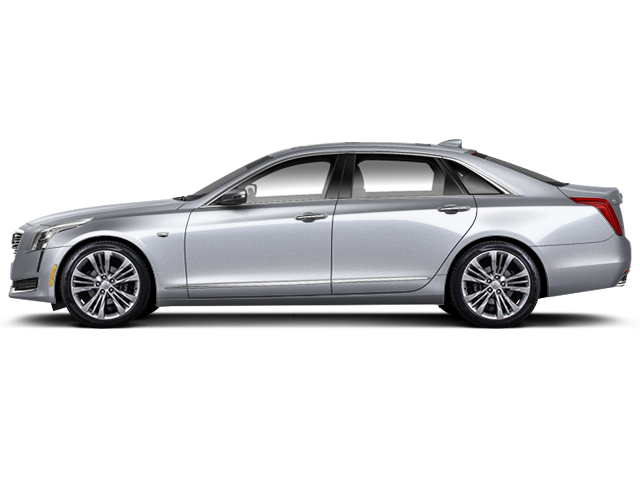The Lincoln brand will be celebrating 100 years of existence in August 2017. Its journey has been marked by original creations and models prized by Hollywood stars as well as residents of the White House. The brand has also experienced some torment caused by unexpected changes in the market, not to mention some dubious management decisions. In recent years, the brain-trust at Ford has sought to give the century-old brand an image makeover.
One “reinvention” came in December of 2012, with the adoption of a new name – Lincoln Motor Company – to distinguish it from the mother brand. Two years later, newly-hot Matthew McConaughey became the company’s spokesman, appearing in a series of TV ads. The young, laconic, almost narcissistic persona of the actor would, the thinking went, re-brand the Lincoln image, which had for too long been associated exclusively with the most staid members of the leisure class.
The arrival on the market, in September 2016, of a distinctive new flagbearer model for the brand was in line with this strategy of renewal. The revived Continental is the first of the company’s models since the demise of the late and unlamented Zephyr 10 years prior to forsake the alphabet soup for its nomenclature and be baptized with a meaningful name. It also succeeded in avoiding looking like a vulgar clone of a Ford vehicle, a problem which afflicted other cars carrying the “Lincoln Star” badge.
Discreet elegance
The 2017 Lincoln Continental replaces the MKS, itself the replacement for the Town Car. If the two earlier models suffered from the same flagrant lack of inspiration, their successor distinguishes itself precisely for its well-conceived esthetics. The Continental also serves as a signpost to the new design road being taken by the brand.
Gone is the generic appearance of the MKS, which failed to hide the obvious close affiliation it had with Ford’s Taurus. The designers at Lincoln gave the Continental an original silhouette, one first glimpsed on the concept of the same name presented in New York in 2015. The design includes many square inches of window space, thanks to a low and very straight beltline as well as delicate curves linked together by discreet indentations by the rear doors. It makes for a dignified look, one that even indulges in a nod to the Bentley Flying Spur via the shape of the back pillars and the recessed badge on the front fender.
The 2017 Lincoln Continental does not feature the rear-hinged “suicide” doors that have made the fourth-generation Continental models (1961-69) so prized by collectors, and really that’s all for the best. The centre of the chassis is at no risk of bending over the years. What’s more, the ample opening provided by the four doors makes getting in and out of the car easy, and its E-Latch door-close assist system helps the Continental reach the required and expected refinement level.
The variety of leather coverings and the choice of wood trims (walnut or ash) featured throughout the interior further burnish that refinement factor (Will anyone lament the absence of yesteryear’s mock wood and other pretend materials? We thought not). With the top-end Continental Ultra trim, Lincoln ramps up the opulence quotient even further with tri-zone climate control, an audio system with choice of 13 or 19 speakers, and even a rear-seat equipment package that transforms that part of the cabin into a mini living room. Divided by a large console, its bench offers two wide, heated and ventilated seats with adjustable lumbar support and a massage feature. This package costs a tidy sum of $5,000 and elevates the Continental into chauffeured-limo territory.
Lincoln is offering an entry-level Select trim in addition to the Ultra version of its large luxury sedan. Each one comes with a twin-turbo V6 - the Select inheriting the MKX SUV’s 2.7L, 335-hp engine, the Ultra the MKZ Ultra’s 3.0L, 440-hp version. These engines, both of which can feed on regular gasoline, are wedded to an automatic 6-speed transmission with manual mode and operate with all-wheel drive. No doubt mindful of the wetter and snowier road conditions that prevail north of the border, the automaker has only made the better-suited 4-wheel drive version available in Canada (American consumers can opt for a front-wheel drive). And for those who feel 6 speeds is rather paltry for the gearbox of such a car, remember that this actually gives the manual mode a useful purpose (which is sadly not the case in several competing models whose transmission boxes feature never-ending transmission ratios).
At the same time, to minimize fuel consumption of both engines, Ford equipped them with a stop-start system; the result is an average of about 12L/100 km for the Ultra’s turbo engine, the one we drove. The Select is only slightly better at 11.8L/100 km, and its accelerations and gear changes are surely not as energetic.
A name drenched in history
A consumer today looking for a model that’s less flashy than a Cadillac CT6 can credibly turn his attention to the Lincoln banner; it offers an alternative that displays discreet panache and has nine decades of history and reputation under its belt. This is one of those intangibles that the Genesis G90, the Infiniti Q70 and even the Lexus LS, for example, would dearly love to benefit from.
And yet, no one could have predicted such a long and illustrious future when, in 1938, Edsel Ford returned from a trip to Europe and asked the team at his company to build him a car with a “continental” feel. In other words, one inspired by the luxury cars he had seen on the old continent. Lest one get carried away applying the visionary tag to the man, though, the story goes that he was mainly interested in having a car he could drive on his next holidays.
Some historians, like Jesse H. Haines, suggest instead that the Continental was created to reinvigorate the brand, then suffering through a years-long decline in sales. This was all the more galling since its competitor Packard had just launched the elegant One-Twenty convertible, which featured a Darrin-designed chassis. It was a polished jewel on four wheels, exactly what was missing from the Lincoln lineup at that time.
To minimize development costs, the convertible designed by Eugene T. Gregorie was built with elements sourced from the larger-production Lincoln Zephyr car. The Continental received its chassis, 120-hp V12 engine and some body panels. The new car, slightly longer and with a larger trunk fitted with an exterior spare tire in a sleeve, did have something the Zephyr lacked, however: aristocratic styling.
The Continental was so well received that Edsel Ford decided to produce a modest number of the model at the tail end of 1939. Fewer than 2,000 units of the car, which sold for three times the price of a regular everyman’s Ford, were built before production came to a halt due to the onset of World War II.
This was not to say the Continental did not leave its mark. The grand figure of American architecture, Frank Lloyd Wright, proclaimed it the most beautiful car ever built. The lifelong car aficionado actually bought two of them before its short production run came to an end.
Assembly of the Continental started anew in 1946 with the return of the peacetime economy, and the Lincoln car became a must-have accessory for luminaries from all walks of society: Hollywood stars, politicians, rich entrepreneurs, etc. That same year it even did pace car duties at the Indianapolis 500!
Its notoriety continued with the Continental Mark II, a coupe with a radically different long hood, and which launched in 1956. Elvis and Sinatra each paraded around in one, and Elizabeth Taylor got one as a gift from Warner Brothers in recognition of the success of the film Giant.
Redefining its identity
In a bid to squeeze more profitability out of this highly desired model, Ford in 1958 launched a third generation, as eccentric as it was anonymous. The Continental lost a good part of its lustre during this period in which outrageous design dictated the direction of the industry.
The next generation, in 1961, did gain back some lost ground, with a 4-door convertible design. It was the type of vehicle that lent itself ideally to parades, and of course it was aboard a Continental that President John F. Kennedy was assassinated on that sad day of November 1963 in Dallas, Texas.
The next generations of the Continental distinguished themselves only by their relative anonymity. In 1982, the Continental rather awkwardly borrowed the “Razor Edge” look so favoured by the British automakers as part of a bid to replace the Versailles, itself an ode to American kitsch.
The 1988 edition saw the Continental make the switch from rear-wheel to front-wheel drive, to the consternation of purists and ultraconservatives. These nay-sayers, of course, had no inkling of the all-wheel drive revolution to come.
The Lincoln Continental in 2017
Now, 90 years on, we’ve got a sedan that outweighs its pre-war ancestor by some 100 kg. One that makes efficient use of a few esthetic attributes that evoke the large European tourers (though not the Continental from Bentley, let’s be clear!) to create for itself a successful, patrician look - wedded of course to a thoroughly modern powertrain.
Obviously, it can no longer house a V12, especially not a naturally aspirated side-valve that gorges itself to the tune of 25L/100 km/h and takes a full 20 seconds to get the car up to 100 km. Today’s standards and expectations translate into a V6 twin-turbo double-overhead camshaft engine able to go from 0-100 km/h in a quarter of that time, and consume half as much fuel while doing it. At the wheel? A Hollywood star, of course!
Not quite a return to its source, mind you, but the juxtaposition is an amusing one.















